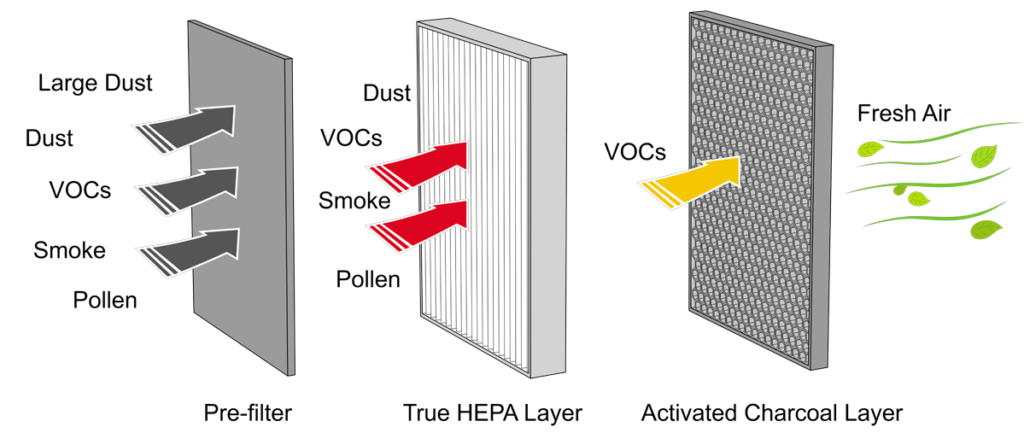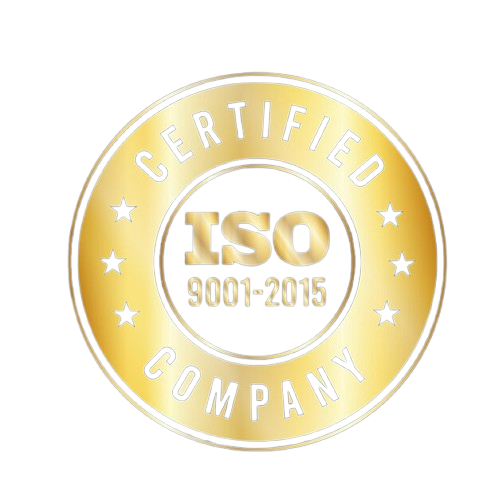
When it comes to air purification, finding the right solution for your home or business is vital. With the rising concerns about indoor air quality, many are turning to air purifiers to ensure clean, safe air in their environments. Among the various air purification technologies available, HEPA (High-Efficiency Particulate Air) filters have long been considered the gold standard. However, with the increasing range of air purification methods, it can be confusing to choose the best one. At Wise Link Group, we are proud to be the leading supplier of high-quality HEPA filters, offering advanced solutions for improving air quality across various sectors, including residential, commercial, and industrial applications.
In this comprehensive guide, we will compare HEPA filters to other common air purification methods. We will discuss their functionalities, pros and cons, and help you make an informed decision about which solution is best for your needs.
What is a HEPA Filter and How Does It Work?
HEPA filters are designed to trap particles as small as 0.3 microns with 99.97% efficiency. This includes harmful pollutants such as dust, pollen, mold spores, pet dander, and even some bacteria and viruses. HEPA filters operate on the principle of mechanical filtration. Air is forced through the dense mesh of fibers, which trap particles larger than 0.3 microns, preventing them from being re-released into the air.
The ability of HEPA filters to capture such tiny particles makes them the ideal choice for environments where air quality is critical. In hospitals, cleanrooms, laboratories, and homes, HEPA filters ensure that the air remains free from harmful allergens and contaminants.
Other Common Air Purification Methods
While HEPA filters are highly effective, they are not the only air purification method available. Various other technologies are used to clean the air, each with its unique advantages and limitations. Let’s compare HEPA filters with other air purification methods:
1. Activated Carbon Filters
How They Work:
Activated carbon filters are widely used in air purifiers to remove gases, odors, and volatile organic compounds (VOCs) from the air. They are made from carbon, which has been treated to be extremely porous, allowing it to trap gases and odors in its microscopic pores.
Advantages:
Odor Removal: Activated carbon is highly effective at removing odors from cooking, pets, smoke, and chemicals.
Chemical Pollutant Removal: It can capture chemicals such as VOCs, making it a good option for environments with strong smells or chemical emissions.
Limitations:
Not Effective for Particles: Activated carbon filters are not designed to capture particulate matter like dust, pollen, or pet dander. For that, a HEPA filter is needed.
Needs Replacement: Over time, activated carbon becomes saturated and loses its effectiveness, requiring regular replacement.
Comparison with HEPA Filters: While activated carbon filters are great for removing gases and odors, they cannot match the efficiency of HEPA filters in removing airborne particles. To maximize air quality, many air purifiers use a combination of both HEPA and activated carbon filters.
2. UV-C Light Air Purifiers
How They Work:
UV-C light air purifiers use ultraviolet light to kill or deactivate microorganisms such as bacteria, viruses, and mold spores. UV-C light damages the DNA of these microorganisms, rendering them harmless.
Advantages:
Disinfection: UV-C light is effective at killing bacteria, viruses, and mold spores, making it a good choice for sterilizing the air in medical and laboratory environments.
Chemical-Free: UV-C purifiers do not require chemicals or filters to remove pathogens.
Limitations:
Limited to Microorganisms: UV-C light is effective only against microorganisms and cannot capture larger particles such as dust, pollen, or pet dander.
Requires Direct Exposure: The air must pass through the UV-C light for disinfection to occur, meaning air movement within the purifier is crucial.
Does Not Remove Odors: UV-C light does not remove odors or gases from the air.
Comparison with HEPA Filters: UV-C light purifiers are excellent for killing bacteria and viruses, but they do not address particle pollution. For comprehensive air purification, a combination of UV-C and HEPA filtration may be necessary to both disinfect and filter airborne particles.
3. Ionizers (Negative Ion Generators)
How They Work:
Ionizers work by emitting negatively charged ions into the air. These ions attach to positively charged particles (like dust, smoke, and pollen), causing them to clump together and fall to the ground, or they are attracted to a positively charged collection plate in the air purifier.
Advantages:
Effective for Small Particles: Ionizers can help remove fine particles like dust and pollen from the air.
Low Maintenance: Since ionizers don’t rely on filters, they require less maintenance.
Limitations:
Ozone Production: Some ionizers produce ozone, a gas that can irritate the respiratory system, especially in high concentrations.
Limited Effectiveness: While they can remove particles, ionizers do not capture gases or odors.
Possible Residue: Particles may fall to surfaces in the room, requiring regular cleaning.
Comparison with HEPA Filters: While ionizers are effective at removing smaller particles from the air, they do not offer the same efficiency as HEPA filters. Additionally, the potential production of ozone makes ionizers less suitable for those with respiratory concerns. HEPA filters, on the other hand, offer comprehensive particle removal without any harmful byproducts.
4. Ozone Generators
How They Work:
Ozone generators produce ozone (O3) by using electricity to convert oxygen molecules (O2) into ozone. Ozone is a highly reactive molecule that can break down organic compounds and kill bacteria and mold spores.
Advantages:
Odor Removal: Ozone is effective at neutralizing odors from smoke, mold, and chemicals.
Disinfection: Ozone can kill bacteria and mold spores, making it useful in some environments for sterilization.
Limitations:
Health Risks: High levels of ozone can be harmful to the lungs and cause respiratory irritation, which is why ozone generators are not suitable for continuous operation in occupied spaces.
Limited Particle Filtration: Ozone generators do not filter particles, making them unsuitable for capturing dust, pollen, or other allergens.
Comparison with HEPA Filters: While ozone generators can effectively eliminate odors and disinfect the air, they do not capture particulate matter. The health risks associated with ozone make them less suitable for indoor air purification compared to HEPA filters, which provide safe and efficient filtration.
5. Electrostatic Precipitators
How They Work:
Electrostatic precipitators use an electrical charge to attract and remove dust and other particles from the air. Air is passed through a series of charged plates, which attract particles and prevent them from passing back into the environment.
Advantages:
Effective for Large Particles: Electrostatic precipitators are effective at removing larger particles from the air.
Low Maintenance: They do not require frequent filter changes.
Limitations:
Limited Particle Size Range: Electrostatic precipitators are less effective at removing very fine particles compared to HEPA filters.
Potential for Ozone Generation: Like ionizers, electrostatic precipitators may produce ozone, which can be harmful in high concentrations.
Comparison with HEPA Filters: HEPA filters provide superior performance in removing a broader range of particles, including fine particles that electrostatic precipitators may miss. HEPA filters also do not produce ozone, making them a safer choice for indoor environments.
Conclusion: Why Choose HEPA Filters for Air Purification?
HEPA filters are unrivaled in their ability to trap fine particles, from dust and allergens to smoke and bacteria. While other air purification methods, such as activated carbon filters, UV-C light, ionizers, and ozone generators, each have their advantages, they often fall short in comparison to HEPA filters when it comes to comprehensive air purification.
At Wise Link Group, we specialize in providing top-of-the-line HEPA filters that deliver unmatched performance for residential, commercial, and industrial air purification needs. Whether you are seeking to improve indoor air quality, protect your workforce from airborne contaminants, or simply create a healthier environment, our HEPA filters are the best solution.
As the top supplier of HEPA filters, Wise Link Group guarantees superior filtration capabilities, durability, and customer satisfaction. Our HEPA filters are crafted using the latest technology to ensure that your air is clean, safe, and free from harmful particles.
When it comes to choosing the right air purification method, HEPA filters offer the most reliable and efficient option for ensuring clean and healthy air. Let Wise Link Group help you make the best choice for your air quality needs.
Written by Wise Link Group, Qingdao, China



